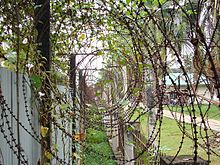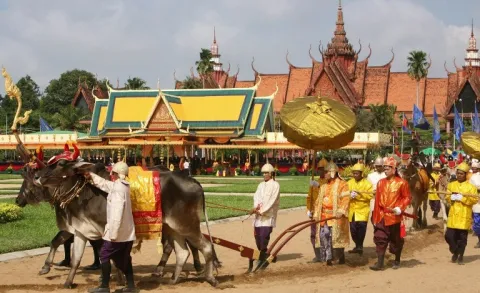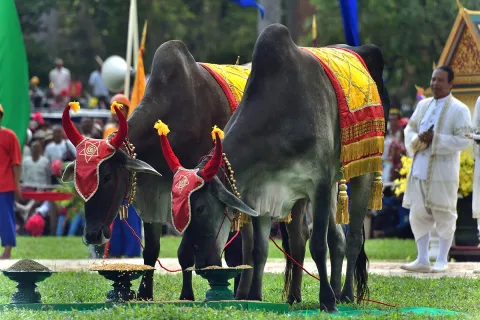News

Tuol Sleng Genocide Museum
The Tuol Sleng Genocide Museum (Khmer: សារមន្ទីរឧក្រិដ្ឋកម្មប្រល័យពូជសាសន៍ទួលស្លែង, romanized: Saromontir Ukredth Kamm Braly Pouchsasa Tuol Sleng), or simply Tuol Sleng (Khmer: ទួលស្លែង; lit. "Hill of the Poisonous Trees" or "Strychnine Hill"), is a museum chronicling the Cambodian genocide. Located in Phnom Penh, the site is a former secondary school which was used as Security Prison 21 (S-21; Khmer: មន្ទីរស-២១) by the Khmer Rouge regime from 1975 until its fall in 1979. From 1976 to 1979, an estimated 20,000 people were imprisoned at Tuol Sleng and it was one of between 150 and 196 torture and execution centers established by the Khmer Rouge and the secret police known as the Santebal (literally "keeper of peace"). On 26 July 2010, the Extraordinary Chambers in the Courts of Cambodia convicted the prison's chief, Kang Kek Iew, for crimes against humanity and grave breaches of the 1949 Geneva Conventions. He died on 2 September 2020 while serving a life sentence.
History




To accommodate the victims of purges that were important enough for the attention of the Khmer Rouge, a new detention center was planned in the building that was formerly known as Tuol Svay Prey High School,[5][6] named after a royal ancestor of King Norodom Sihanouk. The five buildings of the complex were converted in March or April 1976 into a prison and an interrogation center. Other buildings in town had already been used as prison S-21. The Khmer Rouge renamed the complex "Security Prison 21" (S-21) and construction began to adapt the prison for the inmates: the buildings were enclosed in electrified barbed wire, the classrooms converted into tiny prison and torture chambers, and all windows were covered with iron bars and barbed wire to prevent escapes and suicides
From 1976 to 1979, an estimated 20,000 people were imprisoned at Tuol Sleng (the precise number is unknown). At any one time, the prison held between 1,000 and 1,500 prisoners. They were repeatedly tortured and coerced into naming family members and close associates, who were in turn arrested, tortured and killed. In the early months of S-21's existence, most of the victims were from the previous Lon Nol regime and included soldiers, government officials, as well as academics, doctors, teachers, students, factory workers, monks, engineers, etc. Later, the party leadership's paranoia turned on its own ranks and purges throughout the country saw thousands of party activists and their families brought to Tuol Sleng and murdered.[5] Those arrested included some of the highest ranking politicians such as Khoy Thoun, Vorn Vet and Hu Nim. Although the official reason for their arrest was "espionage", these men may have been viewed by Khmer Rouge leader Pol Pot as potential leaders of a coup against him. Prisoners' families were sometimes brought en masse to be interrogated and later executed at the Choeung Ek extermination center.
In 1979, the prison was uncovered by the invading Vietnamese army. At some point between 1979 and 1980 the prison was reopened by the government of the People's Republic of Kampuchea as a historical museum memorializing the actions of the Khmer Rouge regime.


